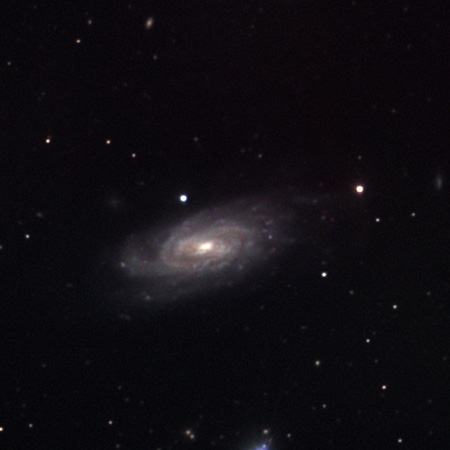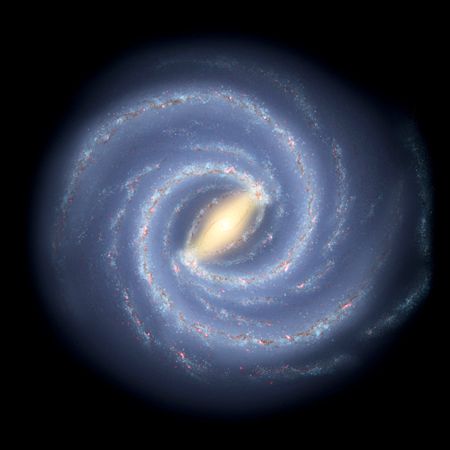Galaxies range in size from dwarfs with just a few billion stars to giants with one hundred trillion stars, each orbiting its galaxy's center of mass. Galaxies are categorized according to their visual morphology as elliptical, spiral and irregular. Many galaxies are thought to have black holes at their active centers. The Milky Way's central black hole, known as Sagittarius A*, has a mass four million times greater than the Sun. As of March 2016, GN-z11 is the oldest and most distant observed galaxy with a comoving distance of 32 billion light-years from Earth, and observed as it existed just 400 million years after the Big Bang.

The Hubble classification system rates elliptical galaxies on the basis of their ellipticity, ranging from E0, being nearly spherical, up to E7, which is highly elongated. These galaxies have an ellipsoidal profile, giving them an elliptical appearance regardless of the viewing angle. Their appearance shows little structure and they typically have relatively little interstellar matter. Consequently, these galaxies also have a low portion of open clusters and a reduced rate of new star formation. Instead they are dominated by generally older, more evolved stars that are orbiting the common center of gravity in random directions.

Spiral galaxies resemble spiraling pinwheels. Though the stars and other visible material contained in such a galaxy lie mostly on a plane, the majority of mass in spiral galaxies exists in a roughly spherical halo of dark matter that extends beyond the visible component, as demonstrated by the universal rotation curve concept. Spiral galaxies consist of a rotating disk of stars and interstellar medium, along with a central bulge of generally older stars. Extending outward from the bulge are relatively bright arms. In the Hubble classification scheme, spiral galaxies are listed as type S, followed by a letter (a, b, or c) that indicates the degree of tightness of the spiral arms and the size of the central bulge.

A shell galaxy is a type of elliptical galaxy where the stars in the galaxy's halo are arranged in concentric shells. About one-tenth of elliptical galaxies have a shell-like structure, which has never been observed in spiral galaxies. The shell-like structures are thought to develop when a larger galaxy absorbs a smaller companion galaxy. As the two galaxy centers approach, the centers start to oscillate around a center point, the oscillation creates gravitational ripples forming the shells of stars, similar to ripples spreading on water. For example, galaxy NGC 3923 has over twenty shells.
Copyright © 2017.SpaceX All rights reserved.